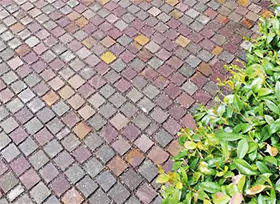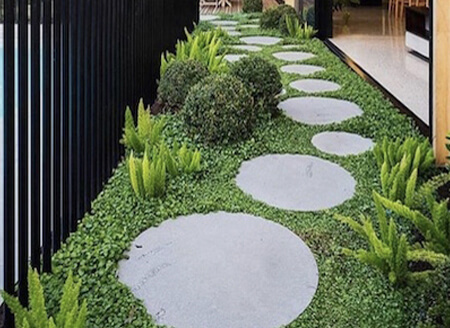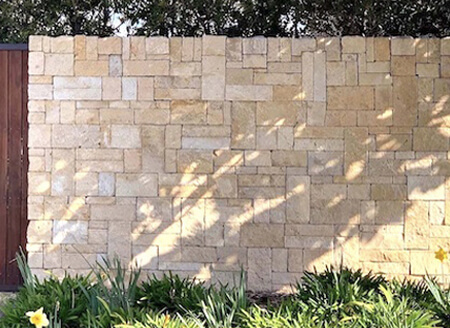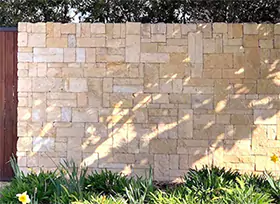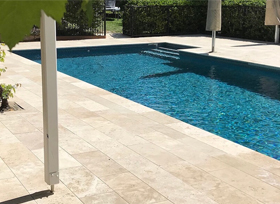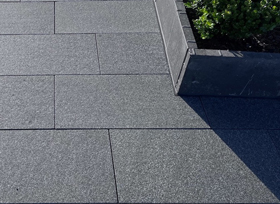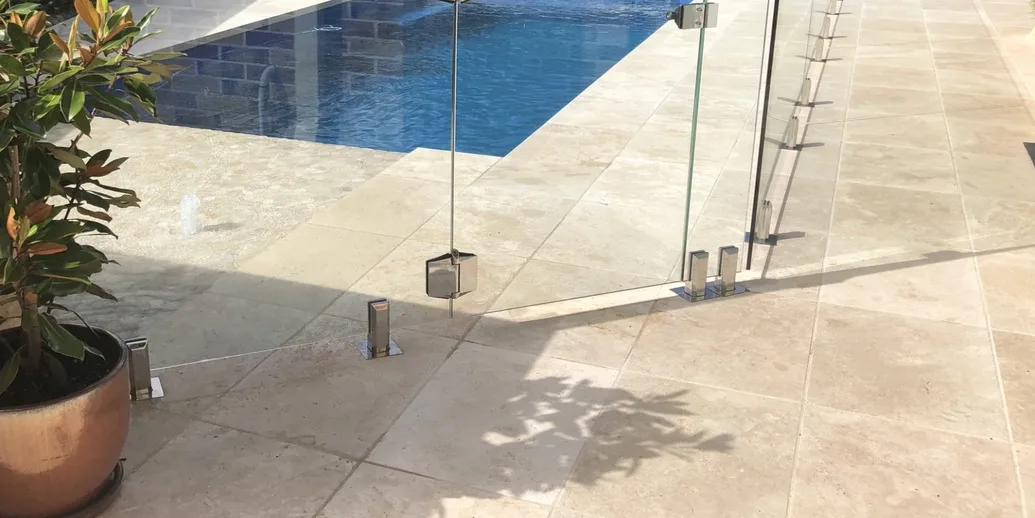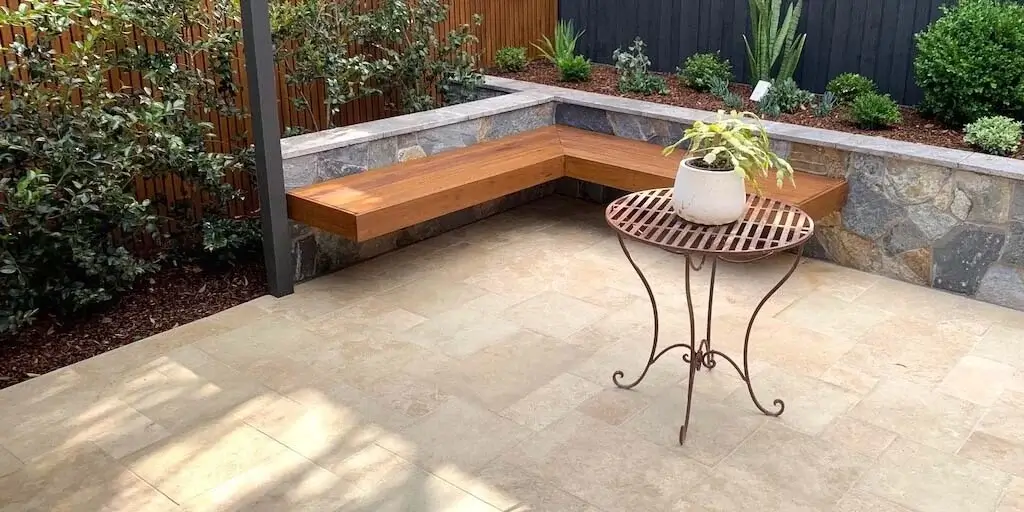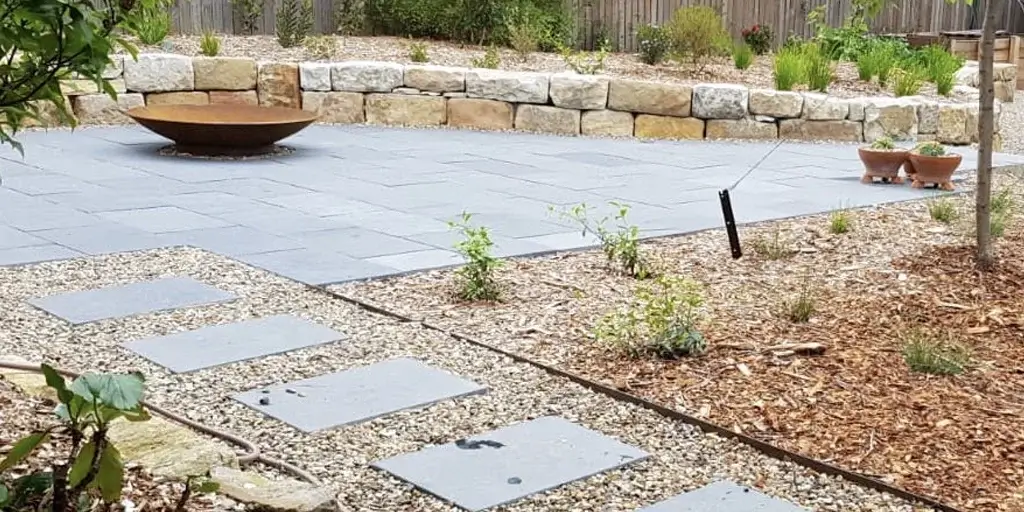Sandstone pavers with their beautiful natural appearance and gorgeous textures transform all set-ups. They offer a durable, hard-wearing surface while feeling soft underfoot. However, due to their high porosity, they are prone to moisture damage, staining or breaking. Good care will keep these worries at bay and help this natural stone survive in the long run. Here are six easy maintenance tips for your Sandstone pavers to keep them intact and fresh for a long time:
Periodic sealing
Sealing Sandstone pavers is important because they are porous stones. The pores allow dust, debris, liquids, or chemicals to leach in easily which eventually harm the surface. Porous stones are susceptible to getting stained or damaged by moisture. We highly recommend sealing Sandstone pavers annually with a deep, impregnating sealer during installation. These sealants enter the pores and create a protective barrier against dirt, debris and water-based or greasy substances. Additionally, you should reseal the stone pavers atleast once a year to maintain their shine and keep them protected. The first step towards maintaining any natural stone is sealing.
Cleaning before sealing
Sandstone pavers like all other natural stones should be cleaned and dried thoroughly before sealing. It would otherwise be impossible to get rid of stains, dirt, or wax deposits after sealing. You can power wash the pavers to clean them. In case the pavers are installed indoors, you can vacuum clean your Sandstone floors to remove dust particles and dirt from them.
Regular cleaning
Remember, prevention is better than cure? It is best to clean your Sandstone pavers regularly to maintain their shine and avoid stains. Use a damp mop or cloth to clean dirt, grime, or debris. No chemical cleaner is required. If you rinse the stone's surface with water, it should not be left to dry on its own. We recommend patting it dry with an absorbing cloth. Regular cleaning makes it easy to maintain your pavers and lowers the chances of dirt or dust accumulation.
Soap solution
There might be an instance when your Sandstone pavers outdoor get grime or lichen settling in the grouts, or a layer of dust has formed on the surface which is difficult to remove. In such case, use a mild soap solution to wash the pavers. Mix mild detergent or dish soap in warm water and pour it over the paving stones. It is advisable to put some elbow grease and scrub the Sandstone surface with a semi-hard bristled brush. In the end, pour clean water and pat the surface dry, leaving it untouched for 24 hours. Mild soap solution is also useful to get rid of blemishes or tints.
Bleaching
Bleaching the Sandstone pavers is not usually recommended because bleach can cause discolouration and make the stone dull. However, bleaching is a domestic technique to remove moss, algae, or dirt. All you need to do is dilute equal parts of bleach and water and pour the solution on the pavers. Then mop the paving stones and wait for a minimum of thirty minutes. Post this, rinse with plain water to wash away any contaminants and bleach. This solution kills moss and algae but doesn't prevent new growth. Also, check with the manufacturer to confirm the type of bleach. The wrong type might discolour the pavers.
Crumbling Sandstone
This is a corrective measure if Sandstone pavers are damaged. So, if your outdoor Sandstone pavers are cracked or damaged, cement-based mortar is not the right solution. It not only ruins the beauty of Sandstone stone but also traps moisture within the seams. This moisture freezes or thaws in winters, ultimately causing more damage. The easiest way to fix these cracks is with epoxy or resin. It comes with pigments that match the colour of the stone. Just mix the pigment with resin and inject the blend into the cracked or broken spots. Leave the damaged area to harden for 24 hours. On the corrected areas, apply a coat of sealant to conceal the repair.
Final Word
Irrespective of its softness and high porosity, Sandstone is quite durable and can withstand weather fluctuations with ease. The natural stone adds a lot of value to your property with its unique textures and colours. All you need is timely maintenance and care to preserve the look and solidity of your Sandstone pavers.
To discuss your Sandstone projects, please feel free to get in touch with our sales representative at 1300 830 274. You can get detailed information about the kind of Sandstone you need or request a free sample. We would be happy to help.
*Disclaimer: All information and advice given above in the blog are to the best of our knowledge. Please reconfirm at your end before execution.






